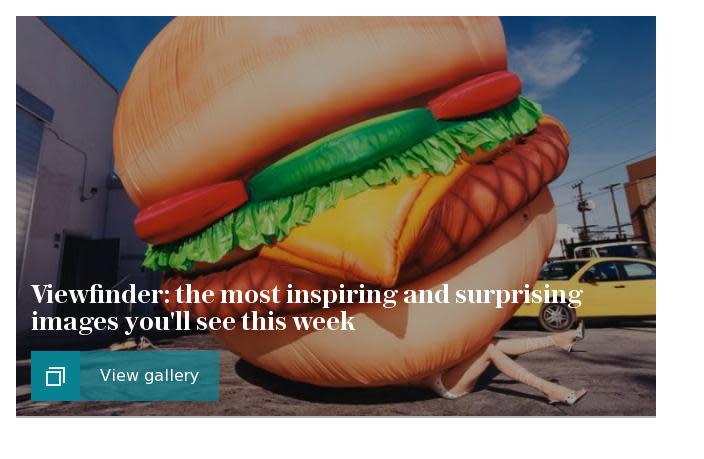Britain according to Burberry: Christopher Bailey on Martin Parr, Ken Russell, and sheepskin car coats

“The number one question I get asked,” says Burberry’s Christopher Bailey, “whether I’m on the street or in one of our shops or on social media, isn’t to do with the business side of the company, it’s what’s the inspiration behind our current collection? These are things people want to know, and this exhibition is an attempt to let them in on the inspirations behind what we do.”
The company’s 46-year-old former CEO – who demoted himself to merely Chief Creative Officer last year – and who is widely credited with turning the iconic, but once ailing British brand around, is sitting in the Old Sessions House, a Georgian former court house on London’s Clerkenwell Green.
Last Saturday night, the building’s gracious interiors, all with the currently trendy half-gutted look, provided the setting for Burberry’s catwalk show for London Fashion Week. Now the garments, a crankily eclectic mix of rubber raincoats, knitted tank-tops, tartan and platform boots, have been displayed through the building.

Alongside, hang the images that inspired them: classic British documentary photography such as Charlie Phillips’s grittily tender images of run-down Sixties Notting Hill, Dafydd Jones’s wry scenes of society swells at play and, of course, pictorial essays in social embarrassment by master of the genre, Martin Parr.
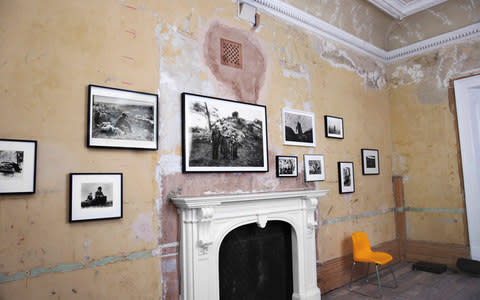

Here We Are is a show that embodies an increasingly important phenomenon in contemporary culture: the suddenly ubiquitous creative rapprochement between art and fashion. Retail outlets littering their display stands with art books as aspirational style items, for instance, or designers showcasing their own works beside the art that inspired them. The voguish young designer J.W. Anderson had an acclaimed show at Hepworth Wakefield earlier this year, and Burberry staged a pop-up Henry Moore exhibition in the old Foyles building in Charing Cross Road in March.
If the intricacies of who curates which exhibitions might be considered of interest primarily to art insiders, Bailey’s Henry Moore show seemed to offer a genuinely new approach to the consumption of art. Moore’s monumental bronzes, their references to the female form and the Yorkshire landscape looming over rows of mannequins bearing Burberry’s Moore-inspired garments had queues stretching round the block (30,000 people saw the show in six days). The experience – not quite gallery, not quite shop – seemed to blur the age-old distinctions between art and commerce, high art and popular culture.

What actually was Bailey trying to do? “Fashion has always been inspired and guided by other art forms, whether its art, film, theatre or music. In the past the references and ideas behind a collection would be left in the design studio. But now people receive information through so many channels, they’re bombarded by so many things, and it’s made them more questioning. Rather than simply taking the appearance of a fashion collection as a given, they want to get under the skin of it, to see what lies behind it.”
At the Foyles show, which was inspired – in good measure – by Bailey’s upbringing in Moore’s native industrial Yorkshire, you felt you could see that process in action: watching the kind of young people you wouldn’t expect to see in an art gallery enthusiastically snapping Moore’s reclining figures on their mobile phones or looking at displays explaining the ways these sculptures fed into different aspects of Bailey’s glamorous garments: texture, shape, silhouette.
Yet surely such projects, for all their apparent philanthropic impact, are, at base, a cool and very clever marketing device? Bailey sighs. Boyishly amiable and disarmingly down to earth, he never quite lets go of his role as company ambassador. “People think of the fashion industry as this commercial juggernaut of fluffiness, and I can’t deny that there’s a commercial aspect to everything we do. But that’s only part of the story. In these exhibitions we’re celebrating the coming together of different creative worlds in a way that isn’t transactional: we aren’t charging people to come in, we aren’t selling anything – though they can buy things from our shops, of course. To see people from many different walks of life coming together at these events is very inspiring. And if people from the art world are getting excited by that,” – he casts a glance in my direction – “then that surely is the point.”
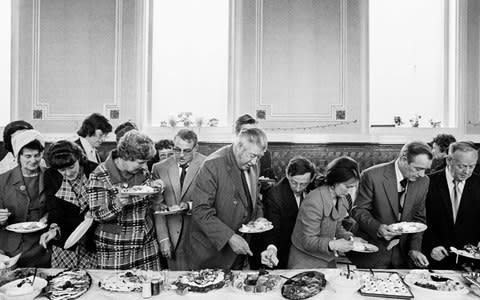
The sources for Bailey’s current, defiantly quirky collection, which juxtaposes Prince of Wales-check baggy trousers with guardsman’s uniforms, sheepskin car-coats and transparent flowery dresses, are all around the gallery walls: from Janette Beckman’s fabulous portrait of the Specials’ organist Jerry Dammers to Ken Russell’s essay on the rituals of Whitehall’s horse guards.
Such images are part of an earthily humane photographic tradition that celebrates British character, with its unique melange of the tribal and the rampantly individualistic.It’s a world where, in Bailey’s interpretation, classic mods, Coronation Street, Royal Ascot and the Bay City Rollers all merge into an idiosyncratic whole.
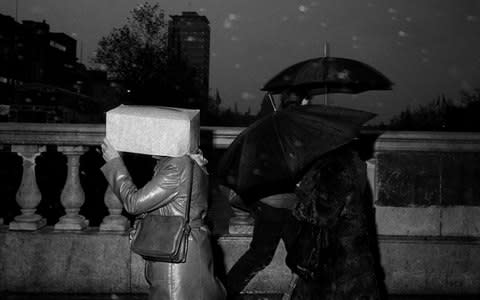
For Bailey, a carpenter’s son from Halifax, who trained at the Royal College of Art before embarking on his meteoric rise through the creative and business sides of the fashion industry, this documentary tradition strikes a deep personal chord. “The two things that got me out of my working class Yorkshire world were music and imagery: photographs, seen predominantly in magazines, not just fashion magazines like the Face, but some of the Sunday supplements, which used to do incredible essays in social portraiture. I’ve always gravitated back to that and used it in my designs.
"Like a lot of people I’m trying to work out what it means to be British today, at a time when we’re going through Brexit and when, from a personal point of view, I’ve become a fairly new father to two little girls. Britain we know is a patchwork of tribes and traditions and worlds, and I wanted to dig a bit deeper into that.”

But isn’t there something a touch insulting – not to say tasteless – in trying to incorporate an image of, say, whippet racing in Doncaster into Burberry’s luxury world? “I really don’t see it like that. Burberry is a luxury brand, I won’t deny that. We make things in a way that gives them a particular price tag. We fly the flag for British culture all over the world. But for me it’s not about exclusivity. I’m not saying everyone can afford to buy one of our beautiful trench coats. But I don’t see what we do as only speaking to three per cent of society. [Burberry is] part of society, whether it’s through our apprenticeships, our sponsorship of young musicians or putting on a photography exhibition.”
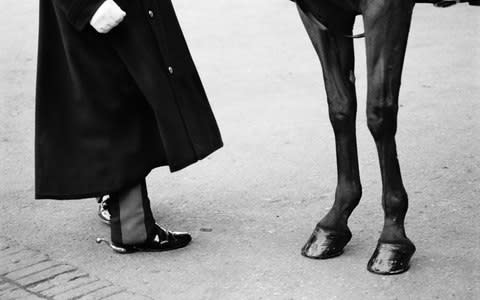
So are exhibitions like his changing the way we view art? Will we soon be in a cultural landscape like Japan, where it would be considered perfectly normal to see, say, a Marcel Duchamp exhibition in a department store? Or is this new approach just a quirky add-on to the existing system?
“I think the whole retail landscape will change dramatically over the next ten years, as I suspect it will with galleries and museums and all the ways we explore and consume the different art forms. We’ll see environments where there’ll be a meeting of art with photography, with fashion, with food, with technology. What we’re doing here is supposed to be a little example of that.”
Here We Are runs at Old Sessions House, London EC1, until Oct 1.
